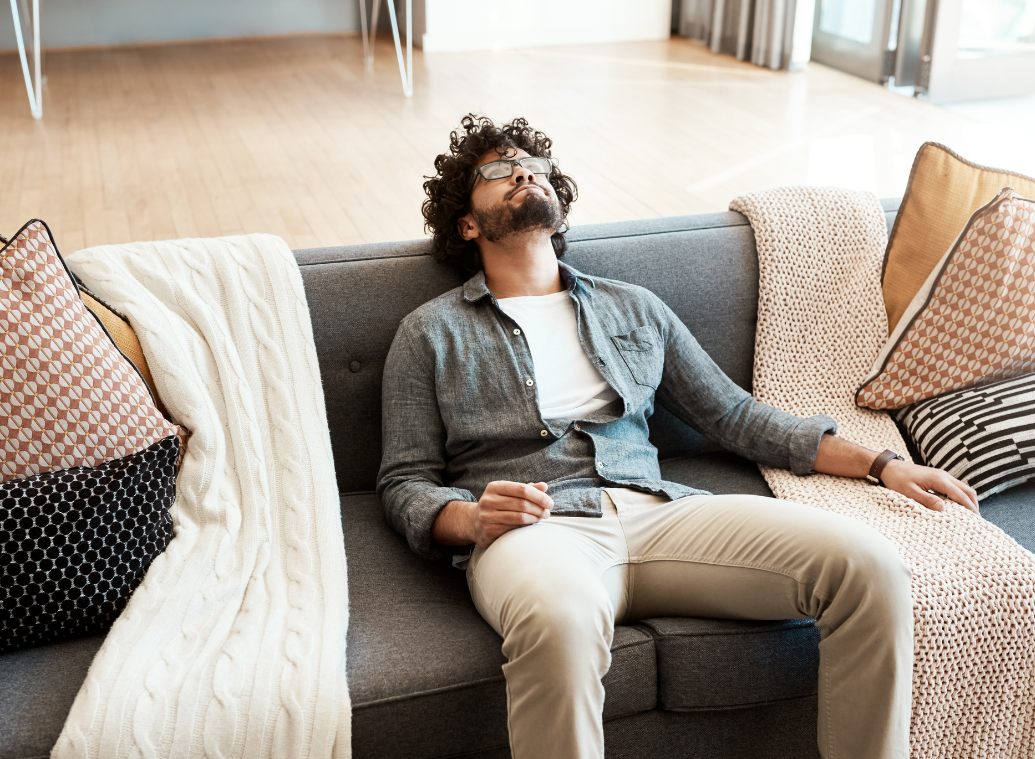- Home
- Share
- Forum
- General forums
- Good to know
- How to stay active in the workplace
How to stay active in the workplace
- 58 views
- 0 support
- 7 comments
All comments
![]()
hundal
Good advisor
![]()
hundal
Last activity on 03/31/2023 at 9:02 AM
Joined in 2022
174 comments posted | 17 in the Good to know group
6 of their responses were helpful to members
Rewards
-
Good Advisor
-
Contributor
-
Explorer
Arriving early to the office always keeps the mind energetic.
Take short breaks,
Walk a little bit
Make small body stretches
If working on the computer, then do eye exercises.
Take in plenty of water
Work smartly
Close all
See the responses
![]()
nona25
![]()
nona25
Last activity on 07/07/2023 at 7:20 PM
Joined in 2023
3 comments posted | 1 in the Good to know group
Rewards
-
Explorer
I would like to see similar advice for students. How to be active and have time to do all assignments on time?)) I get very tired and I often don't have enough time to do my writing. In order not to get bad grade, I have to turn to the experts of academic ghostwriting. Maybe you can give me some useful tips to help me organize my day properly and have time to do my homework?

mikejason
Good advisor
![]()
mikejason
Last activity on 02/08/2024 at 3:55 AM
Joined in 2023
9 comments posted | 2 in the Good to know group
3 of their responses were helpful to members
Rewards
-
Good Advisor
-
Contributor
-
Explorer
@hundal I completely understand the struggle of staying active at work. One thing that has helped me is incorporating short stretching exercises during breaks. Taking a quick walk outside or doing some corner desks stretches can do wonders to refresh your mind and body. Also, consider using a standing desk or an ergonomic chair to promote better posture and reduce stiffness. And don't forget to stay hydrated – drinking enough water throughout the day keeps you alert and focused!
Hide the responses
![]()
jioptret
![]()
jioptret
Last activity on 03/18/2023 at 9:21 PM
Joined in 2023
1 comment posted | 1 in the Good to know group
Rewards
-
Explorer
I think the only way to stay active at work is to choose a job to your liking!

Somya.P
Community managerGood advisor
![]()
Somya.P
Community manager
Last activity on 04/03/2025 at 5:03 PM
Joined in 2023
569 comments posted | 206 in the Good to know group
19 of their responses were helpful to members
Rewards
-
Good Advisor
-
Contributor
-
Messenger
-
Explorer
-
Friend
Hello everyone!
How are you doing today? 😊
Have you seen this discussion? It would be interesting to hear what you think:
@mariappayne @Warekellee @CCORMIEA @pfkiel9 @BetsyScheurer @Rose99 @katherinebhana010 @KikiGoodman @Nholbr @cloudemoji @Snoopy717 @Bones1875 @Jeremywoman22 @hpmoore2001 @mariakenneth @Pigsfly8 @DonnyMirage @Nana58 @Cdbarbosa @DEEPBLUEJAMEY @Carey1220 @Wgthetaz @Aces2307 @shelley8857 @Mswarrior53 @DiabeticGammi @Elizabeth @ximeno @Catlady6 @Angiem8268 @Maria2013 @j.tully115 @TRRagan @BerryGood28 @grymel1989 @Uniqueonne @Skmf55 @kassie @Shortstuff @Reginajames @Michellew421 @Brighton95 @Joedy1950 @ChristopherSL94 @Skyboss @Minnie102 @Sinner22 @Cmata3 @marty65201942 @CynthiaManzella @KarenRancka @Uniquonne @Mysteri2u007 @Timothy13 @Sandybee @Ritabo @Bonp1963 @Mizzouski83 @Afeldhausen @Carol1967 @BAH715 @Nornnnoa1050 @MATO0618 @mightymattie76 @JKitch @JerryPhillips @WKBright @LindaGuay47 @Jenmariefaith87 @Madbear351 @Deedeerol @Seh726 @1funlady @MarieRichardson @Allie_D @Shapiroh @ReneeMcmullen @Dpetrafassi @Mistyjo65 @1msbellarose @Snownurse72 @Emiladine @Cheryla1981 @lwillis74
Feel free to comment and have a wonderful day!
Somya from the Carenity team 🌼
See the signature
Somya from the Carenity team
Give your opinion
Survey
Articles to discover...

03/14/2025 | Nutrition
Carbohydrates: Friend or foe? Everything you need to know to make the right choices!
Subscribe
You wish to be notified of new comments
You have been subscribed







Lee__R
Community managerGood advisor
Lee__R
Community manager
Last activity on 04/03/2020 at 5:04 PM
Joined in 2018
1,337 comments posted | 113 in the Good to know group
2 of their responses were helpful to members
Rewards
Good Advisor
Contributor
Messenger
Explorer
Friend
Top chef
Millions of us have jobs that require us to sit at desks or around conference tables for several hours per day. Many health risks are associated with sitting down for prolonged periods — but how do we stay active in the workplace? We find out.
Research has demonstrated that sitting for an extended period is linked with obesity, type 2 diabetes, and an increased risk of death from heart disease and cancer.
Excessive sitting may also slow metabolism, which has an impact on the body's ability to regulate blood pressure and blood sugar, as well as break down body fat.
Injecting physical activity into your working day could reduce some of the health risks that are elevated by being sedentary.
One study found that doing just 30 minutes of activity on 5 days each week — be it going to the gym, cycling to work, or going for a lunchtime walk — could prevent 1 in 12 deaths globally.
Being physically fit can also protect against some of the harms of stress in the workplace. Stress can lead to impaired mental well-being, depressive symptoms, and high blood pressure — all of which could lead to absences from work.
When working at a desk for 7–10 hours per day, finding opportunities to be active can be a challenge.
Medical News Today have compiled five top tips to help you stay active in your working day.
1. Cycle or walk to work
Depending on the location of your job and how far you work from home, try switching up how you get to and from work. Leave the car at home and cycle or walk instead.
Cycling to work is linked to a reduced risk of death from all causes.
When compared with commuting to work by car or public transport, cycling to work has been linked with a reduced risk of death from all causes, and a lower cancer risk.
Both cycling and walking to work have also been associated with a lower risk of cardiovascular disease.
Furthermore, people who walk or cycle to work have a lower body mass index (BMI) and body fat percentage in midlife than those who commute by car.
Those who actively commute to work, by foot or by bike, also benefit from improved well-being and report feeling more able to concentrate and under less strain than those who travel to work by car.
Recent findings indicate that most people hop into their cars instead of actively commuting to work due to worries about the extra time that walking or biking will take. But, when asked to estimate how long it would take to walk or bike to a common location, a majority of participants were incorrect and overestimated.
If you are overweight and inactive, cycling to work is just as effective at helping you to lose fat mass as joining a gym, according to a study by the University of Copenhagen in Denmark.
A morning ride to work could be just the tonic you're looking for if you'd like to lose weight but don't have the time or inclination to visit a fitness center regularly.
2. Stand up regularly
Something as simple as standing up now and then while at work could help curb the related health risks of sitting for too long.
Using a standing desk could help to improve cognitive function.
To reduce sedentary behavior and time spent sitting at work, guidance was published in the British Journal of Sports Medicine in 2015 by experts.
The team concluded that office workers should stand up for at least 2 hours during their work day, with that target eventually reaching 4 hours, to break up prolonged sitting.
Researchers believe that incorporating standing and walking behaviors into the work day might be more doable for workers than targeted exercise.
Recommended work-based standing behaviors include:
More and more businesses are adopting the use of sit-stand desks as more evidence comes to light on their benefits.
The University of Iowa in Iowa City discovered that employees who had sit-stand desks spent 60 minutes more standing per day and burned up to 87 more calories compared with their sitting counterparts. This amount could prove significant in fighting the obesity epidemic, note the researchers.
Another study reported that using a standing desk instead of a sitting desk for 6 hours of the day could help individuals to lose weight over time.
The findings showed that standing burned 0.15 calories per minute more than sitting — which, over the long-term, would equate to a 143.3-pound adult losing 5.5 pounds in 1 year and 22 pounds in 4 years, providing they did not increase their food intake.
Using standing desks has also been shown to have neurocognitive benefits. For example, students who continuously used standing desks experienced improvements in executive functions and working memory capabilities.
3. Move more
Moving more may sound like an obvious action to take when trying to be less sedentary, but, when in the depths of a taxing project, it's easy for many hours to fly by without any sign of movement.
Take the stairs rather than the elevator to incorporate exercise into your working day.
Research has found that for every extra hour of sitting over 5 hours, waist size increased by 2 centimeters and the risk of cardiovascular disease by 0.2 percent.
Low-density lipoprotein, or "bad," cholesterol increases and high-density lipoprotein, or "good," cholesterol decreases.
When questioned about their actual and desired levels of sitting, one study reported that desk-based employees wished to spend less time sitting and more time doing physical activity during their working day.
Even when you're sitting down, you don't need to necessarily sit still; fidgeting in your seat could make all the difference.
A study led by the University of Leeds in the United Kingdom suggested that small movements — such as those involved in fidgeting — might counteract some of the adverse effects of prolonged sitting.
Research has demonstrated that vascular function is impaired after 6 hours spent sitting at a desk. However, taking a walk around the office for 10 minutes after a long period of sitting down can restore vascular health.
Get movement into your working day by making a few simple changes.
4. Re-engineer the work environment
Incorporating physical activity into your working day has numerous health benefits, decreases work absence, and boosts cognitive abilities, mood, and productivity. Given all the positive outcomes of being less sedentary, your boss may be open to changing up the working environment to provide more options for movement.
Small desk movements can be encouraged by using a bounce ball to sit on.
Some firms are already offering stretch classes before work, yoga breaks during office hours, and lunchtime running groups to help workers to look after their well-being and increase work efficiency.
Many steps can be taken to re-engineer the office environment. These may include:
A study that examined the effect of a re-engineered working environment found that in addition to workers losing weight and body fat, the co
mpany's revenue rose by nearly 10 percent in the first few months of the study.
There are no drawbacks to using desks with movement interventions. In fact, one professor from Clemson University in South Carolina revealed that using a FitDesk increased motivation and morale and improved problem-solving, decision-making, and creativity.
Even a small device, such as a portable pedal machine, could counter some of the harmful effects of sedentary working, according to a small study published in the British Journal of Sports Medicine.
5. Take an active lunch break
Rather than eating your lunch at your computer while checking your smartphone and answering emails, take a break and do something physically active. You will go back to work feeling refreshed, revived, and more able to concentrate for the rest of the day.
Taking an active lunch break could help you go back to work refreshed and motivated.
Whether you go for a brisk walk, cycle, swim, or to your gym for an hour, doing exercise of any kind helps to break up your day and motivate you for your remaining hours in the office.
A study of more than 1 million people uncovered that being physically
active for at least an hour each day may eliminate the increased risk of death related to sitting for 8 hours per day.
People who spent 8 hours each day seated but were physically active were less likely to be at risk of early death than individuals who sat for fewer hours but were inactive.
Workers who make time to engage in physical activity are also reported to be less likely to develop mental health deterioration, such as symptoms of depression and burnout, than those who do not engage in exercise.
People who were physically active for 4 hours per week were half as likely to experience problems with their mental health than physically inactive individuals.
No matter how you tackle staying active during your working day, it is important to remember that any movement at all, if only for 10 minutes, is better than staying still and not moving at all.
Start small with a 10-minute brisk walk each day and aim for three 10-minute brisk walks, or 30 minutes of moderate physical activity, on 5 days of the week.
Medical News Today